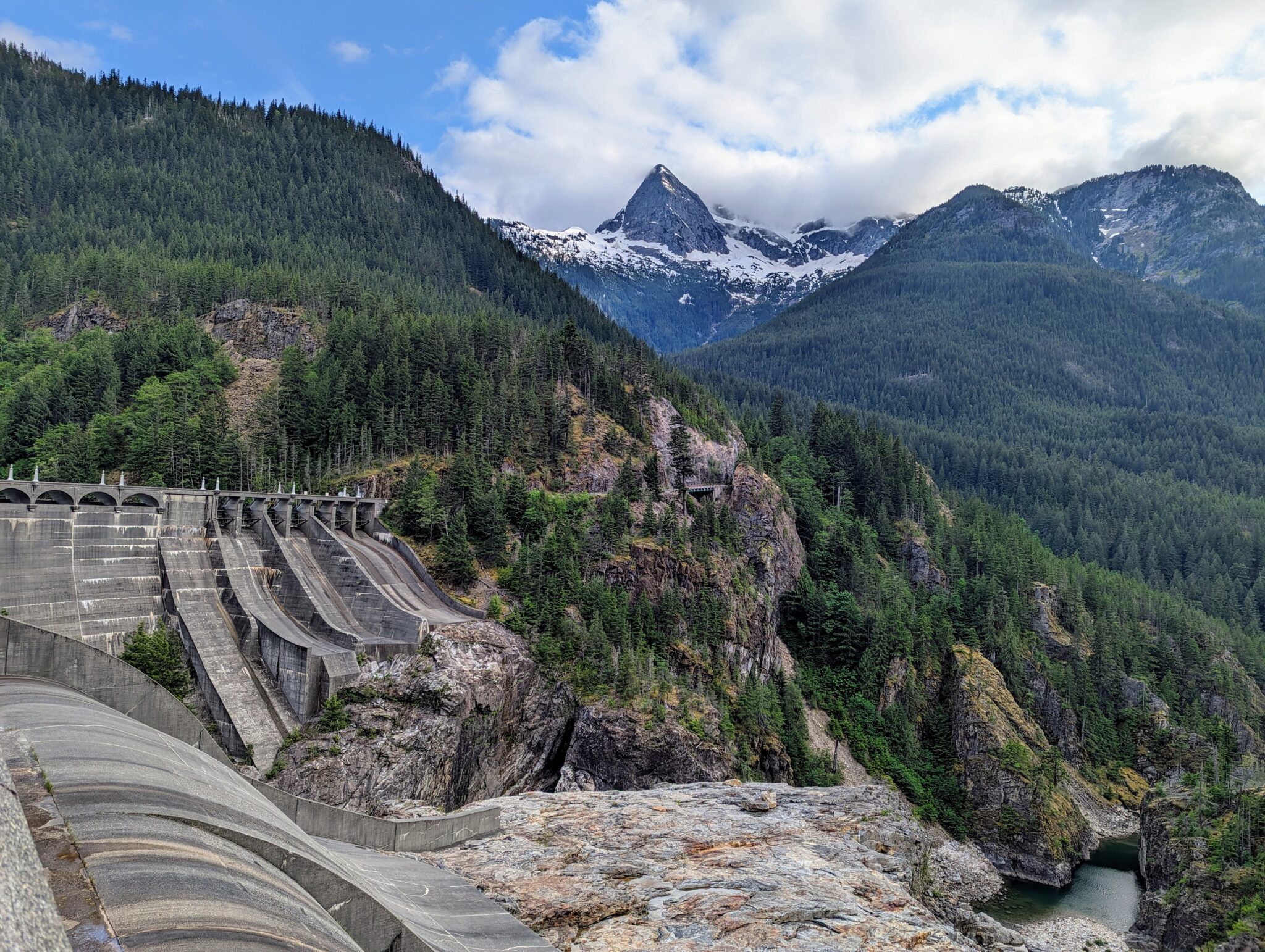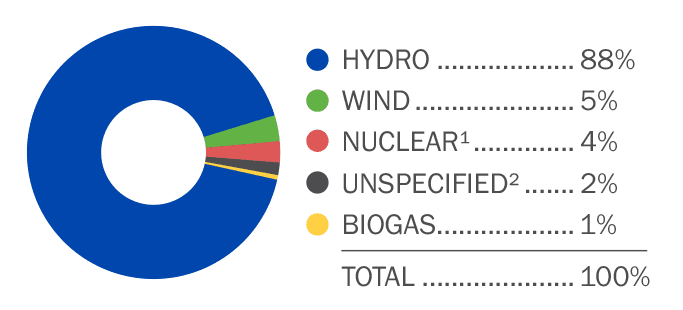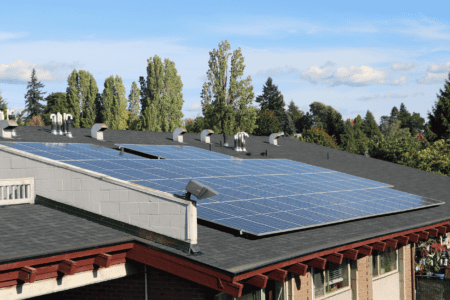
It’s National Renewable Energy Day on Thursday, March 21, 2024, and City Light has many reasons to be thankful and celebrate.
U.S. Renewable Energy Make Up

It may come as a surprise that only around 20% of the United States electricity is sourced from renewable energy resources. The bulk of our country’s energy resources come from non-renewable fossil fuels such as coal, petroleum, and natural gas (60%) with the remainder from nuclear energy.
With the growing impact of climate change, moving away from reliance on fossil fuels for energy resources is a priority. Especially when you consider that energy consumption is estimated to grow by 50% by mid-century.
Clean vs Green vs. Renewable
What exactly is renewable energy you may ask? The language around the energy industry can be quite confusing. Is it clean, green, or renewable? Sometimes, it can be more than one.
Renewable energy and green energy are often used in place of one another but there is a subtle difference. Most green energy resources can also be renewable but not all renewable energy resources can be considered green.
The resources that make up renewable energy, such as wind and solar, are naturally and continuously renewed. Hydropower is an excellent example of renewable energy. It is a flexible resource that relies on the water cycle for its replenishment. For a renewable energy resource to be excluded from being called green, there are generally some carbon emissions associated with its generation.
Energy resources that are considered clean have very little to no greenhouse emissions during their production and storage. An example of clean energy that is not renewable would hydrogen fuel cells.
Luckily, here at Seattle City Light, we benefit greatly from renewable energy resources.
City Light’s Power Mix
Currently, over 88% of the power we deliver is generated from renewable hydroelectricity. Up to 40% comes directly from our fully owned Skagit and Boundary hydroelectric projects on the Skagit and Pend Oreille Rivers. The power we do not generate is then purchased from a mix of energy resources provided by the Bonneville Power Administration (BPA) and other renewable sources to meet demand. Additionally, 5% of our electricity is sourced from wind, 4% from nuclear, and 1% biogas. City Light does not have coal and natural gas in its resource mix, making the energy flowing to our customers’ homes a win for the environment.
Seattle City Light’s Energy Resources 1 2
1 City Light does not have coal or natural gas resources in its power supply portfolio. It does make market purchases to balance or match its loads and resources. These purchases, along with market purchases made by Bonneville Power Administration (BPA), may incidentally include coal or natural gas resources, which are assigned to the utility. Any emissions associated with unspecified market purchases are offset through our greenhouse gas (GHG) neutrality policy. 2 This fuel represents a portion of the power purchased from BPA.
In fact, City Light continues to look to the future as we identify more renewable sources in which to procure energy. Recommendations outlined in the 2022 Integrated Resource Plan identify the need to add approximately 175 megawatts (MW) of solar and 225 MW of wind to our energy portfolio over the next 10 years. These renewable resources are essential for powering our energy future here in Seattle.
Green Up Opportunities
For customers who want to take their energy consumption one step further, City Light offers a program that allows them to support the continued growth of renewable energy right here in our community. Green Up is a voluntary renewable energy program that allows you to support wind, solar and other renewable energy projects that are generating carbon-free energy across the Pacific Northwest.
City Light purchases on behalf of Green Up customers regional renewable energy credits (RECs) and funds local rooftop solar projects hosted by not-for-profits and public organizations like affordable housing, schools, and parks. Some of our recent projects include community solar installations at the Evergreen Aquatic Center in White Center and Brighton Senior Housing in Rainier Valley.
As the demand for energy continues to increase, so will the need to diversify opportunities and maximize cost savings while combating the adverse effects of climate change. City Light is ready to tackle this challenge head on.
To learn more, visit City Light’s Renewable Energy Services page.

